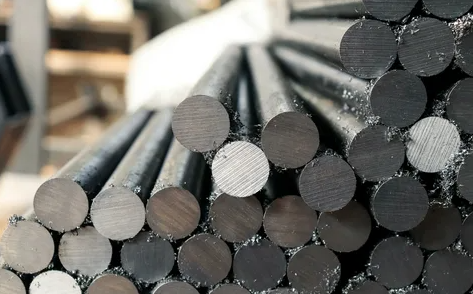China's lofty ambitions of peaking carbon emissions by 2030 and achieving carbon neutrality by 2060 have pushed major Chinese steelmakers to develop a greener production path as they increasingly show interest in developing direct reduced iron or DRI plants using hydrogen and natural gas.
But rising decarburization costs and the expected dominance of the traditional BOF route in the Chinese steel industry will slow the sector's transition to the low-carbon direct reduction electric arc furnace route until at least 2030 for the foreseeable future.
Reducing emissions along the BF route will also be costly and difficult.
In search of hydrogen-based carbon-free steel
S&P Global Commodity Insights estimates that China is likely to have at least 8.2 Mt/y of low- or zero-carbon DRI capacity commissioned in 2021-2025, with Baosteel and Hebei Iron & Steel Group being the two major pioneers. Baosteel is part of the Baowu Group, the world's largest steel producer, while Hebei Iron & Steel is ranked third in global steel production.
Despite efforts, direct reduction hydrogen plants remain on a relatively smaller production scale.
The technology for using pure hydrogen as a reducing gas at the DRI plant is still under testing or experimentation in China, Baosteel said. The company aims to increase the hydrogen content ratio of its DRI plant to 80%-90% by 2030.
The reducing gases at the first direct reduction plants at Baosteel and Hebei Iron & Steel will be a combination of hydrogen, natural gas and coke oven gas.
Baosteel aims to cut its carbon emissions by 30% from 2020 levels in 2027, while Baowu has the same goal in 2035. processing material into finished steel - in 2030
While the carbon-free auto sheet will come from the DRI-EAF route, in order to effectively reduce carbon emissions, market sources expect that Baosteel and its parent company Baowu Group will have to mainly depend on the use of the decarburization route of the blast furnace converter, as well as the technology carbon capture, use and storage (CCUS).
Steel production from the traditional blast furnace-converter route at Baowu Group accounted for about 93.5% of the total crude steel production of 115 Mt in 2020, while EAF steel production accounted for only 6.5%.
It is not only Baowu Group. This is true for the entire Chinese steel industry.
S&P Global estimates that China's blast furnace-converter route's crude steel smelting capacity is currently over 1 billion tons per year, while EAF steel production capacity is approaching 200 million tons per year.
Expensive decarbonization
Carbon-free steel refers to the production of one metric tonne of steel that emits less than 0.5 million tons of CO2, which means that steel production on the blast furnace-converter route would need to reduce carbon emissions by more than 80% to meet carbon-free standards. steel. .
At present, during the production of 1 million tons of unrefined steel, about 2 million tons of CO2 are released on the way to the blast furnace-converter, and 0.8 million tons of CO2 are released from the consumption of clean scrap in the EAF. Steel production by conventional direct reduction and electric arc furnace emits 1.4–1.95 MtCO2, depending on the types of reducing materials.
Blast furnaces using biomass, zero-carbon electricity and CCUS technology can reduce iron production emissions by up to 80%.
But there is one catch. Production costs will skyrocket, according to Baosteel, and it will take more than $150 a tonne to produce pig iron compared to iron made in conventional blast furnaces.
Throw in hydrogen, and even seemingly more expensive low-carbon production costs pale in comparison.
Iron production in direct reduction plants using green hydrogen as the reducing gas can reduce CO2 emissions by almost 100%, but the costs will be $425/tonne higher than the traditional pig iron production process.
DRI plants using coal, zero-carbon electricity and CCUS will also be able to cut CO2 emissions by almost 100%, but the cost will still be more than $400/tonne higher. Given the high cost of decarbonization and the still imperfect technology – either low or no carbon steel products, some sources say, are unlikely to
Decarbonization of China is a costly task for the metals sector

|
|
Azovpromstal® 23 May 2022 г. 11:47 |





